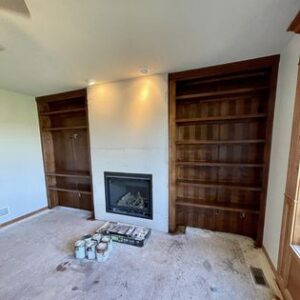Drywall Repair
Drywall Repair
Welcome to The Painters’ ultimate guide to drywall repair. As experts in the field of painting and repair, we understand the importance of maintaining and restoring the integrity of your drywall. Whether it’s minor dents, cracks, or larger holes, proper drywall repair is essential to maintaining the aesthetics and functionality of your walls. In this comprehensive article, we will cover the fundamentals of drywall repair, common types of damage, tools required, step-by-step repair processes, and some useful tips to achieve a seamless finish. So, let’s get started!
Understanding Drywall
Before delving into the repair process, let’s briefly discuss what drywall is and its significance in modern construction. Drywall, also known as gypsum board or sheetrock, is a widely used building material for interior walls and ceilings. It is composed of a core of gypsum plaster sandwiched between layers of paper, providing a smooth and durable surface for painting and decorating.
Common Types of Drywall Damage
Drywall is susceptible to various types of damage over time, including:
Dents and Dings: These are small impressions caused by impacts from furniture, doorknobs, or other objects.
Hairline Cracks: Often caused by natural settling of the building or temperature changes, these cracks are typically superficial.
Nail and Screw Holes: Left behind after hanging pictures or mounting shelves, these holes require patching before repainting.
Gouges and Punctures: Larger holes caused by accidents, furniture movement, or structural issues.
Tools Required for Drywall Repair
To perform efficient and effective drywall repairs, it’s essential to have the right tools on hand. Here are some of the tools you’ll need:
Putty Knife: Used for applying and smoothing joint compound or spackle.
Joint Compound: Also known as mud, it is used to fill and cover cracks and holes.
Sandpaper: To sand down the patched areas for a seamless finish.
Drywall Tape: Reinforces joints and prevents cracking.
Utility Knife: For cutting and shaping drywall patches.
Sanding Block or Power Sander: For larger repair jobs, a power sander can be more efficient.
Primer and Paint: To match the repaired area to the surrounding wall.
Step-by-Step Drywall Repair Process
Now, let’s walk through the step-by-step process of repairing common drywall damage:
Step 1: Prepare the Area
Start by removing any loose debris or paint around the damaged area.
Use a utility knife to create a clean and even outline for the repair.
Step 2: Patch Small Holes and Cracks
For small holes and cracks, apply a thin layer of joint compound with a putty knife.
Press drywall tape into the compound, ensuring it covers the entire damaged area.
Apply a second coat of joint compound over the tape and feather the edges to blend with the wall.
Step 3: Repair Larger Holes
For larger holes, first, clean the edges to remove any loose gypsum or paper.
Cut a patch from a new piece of drywall or use a premade patch.
Apply joint compound around the edges of the hole and press the patch firmly into place.
Cover the patch with additional coats of joint compound, feathering the edges as before.
Step 4: Sand and Prime
Once the joint compound is dry, use sandpaper or a sander to smooth the patched area.
Wipe away any dust and apply primer to the repaired area before painting.
Tips for Achieving a Seamless Finish
To achieve a professional-looking finish, keep the following tips in mind:
Use Light Coats: Apply joint compound in thin, even coats to avoid bulging or cracking.
Feather the Edges: Gradually blend the compound beyond the damaged area for a seamless transition.
Sand Between Coats: Smooth the surface with fine-grit sandpaper before applying additional coats.
Check for Imperfections: Inspect the repaired area under different lighting conditions to spot any imperfections before painting.
Match Paint Colors: Ensure the repaired area matches the existing wall color by using the same paint or getting a custom color match.
Drywall repair is a crucial skill for homeowners and businesses alike, and by following the steps outlined in this guide, you can successfully restore your walls to their original state. Remember, while minor repairs can be DIY projects, larger or more complex damages may require the expertise of a professional painting and repair company like The Painters in Ames, Iowa. A well-executed drywall repair will not only enhance the appearance of your living or working spaces but also prolong the life of your walls, ensuring they remain beautiful and functional for years to come.
